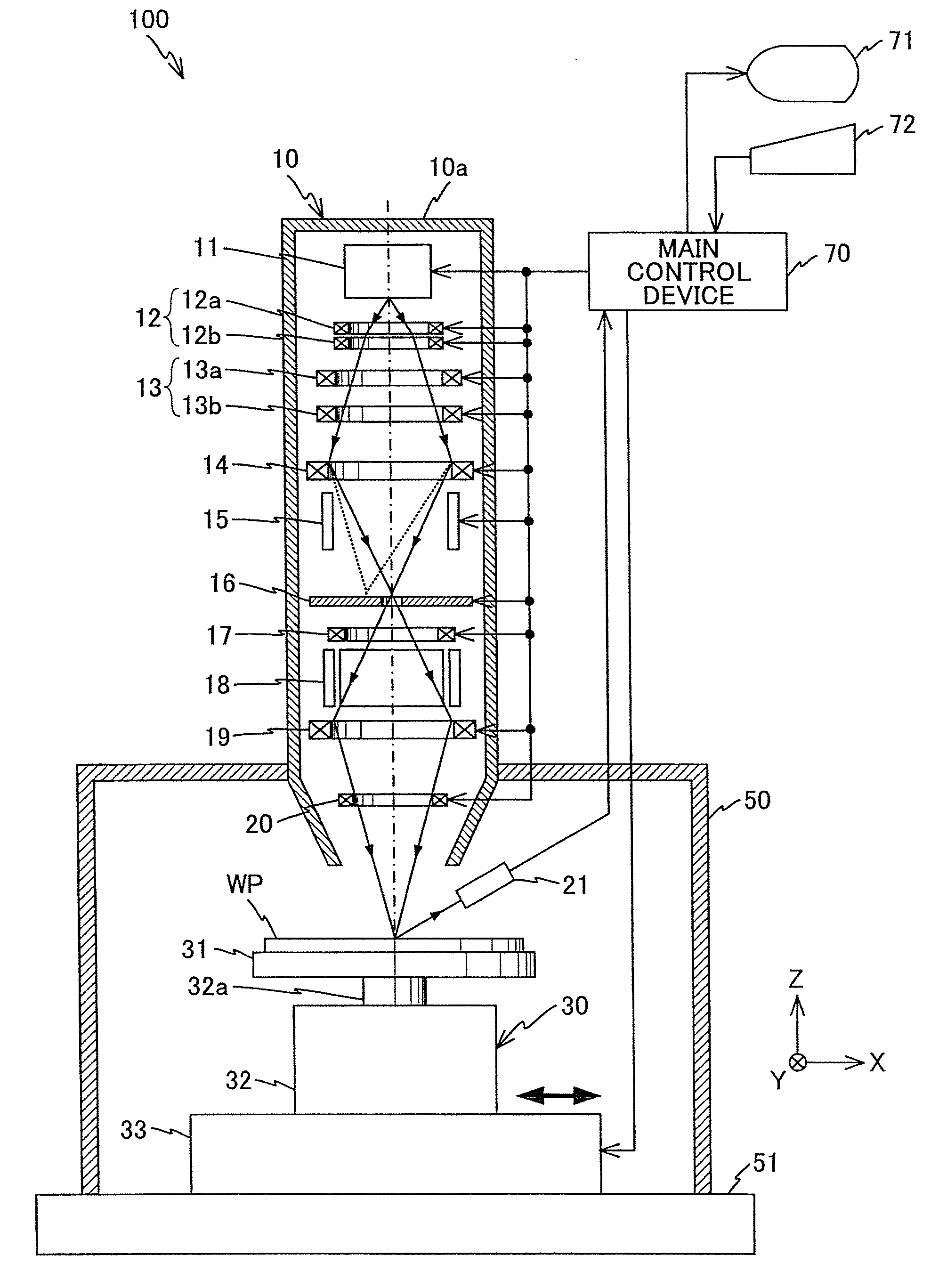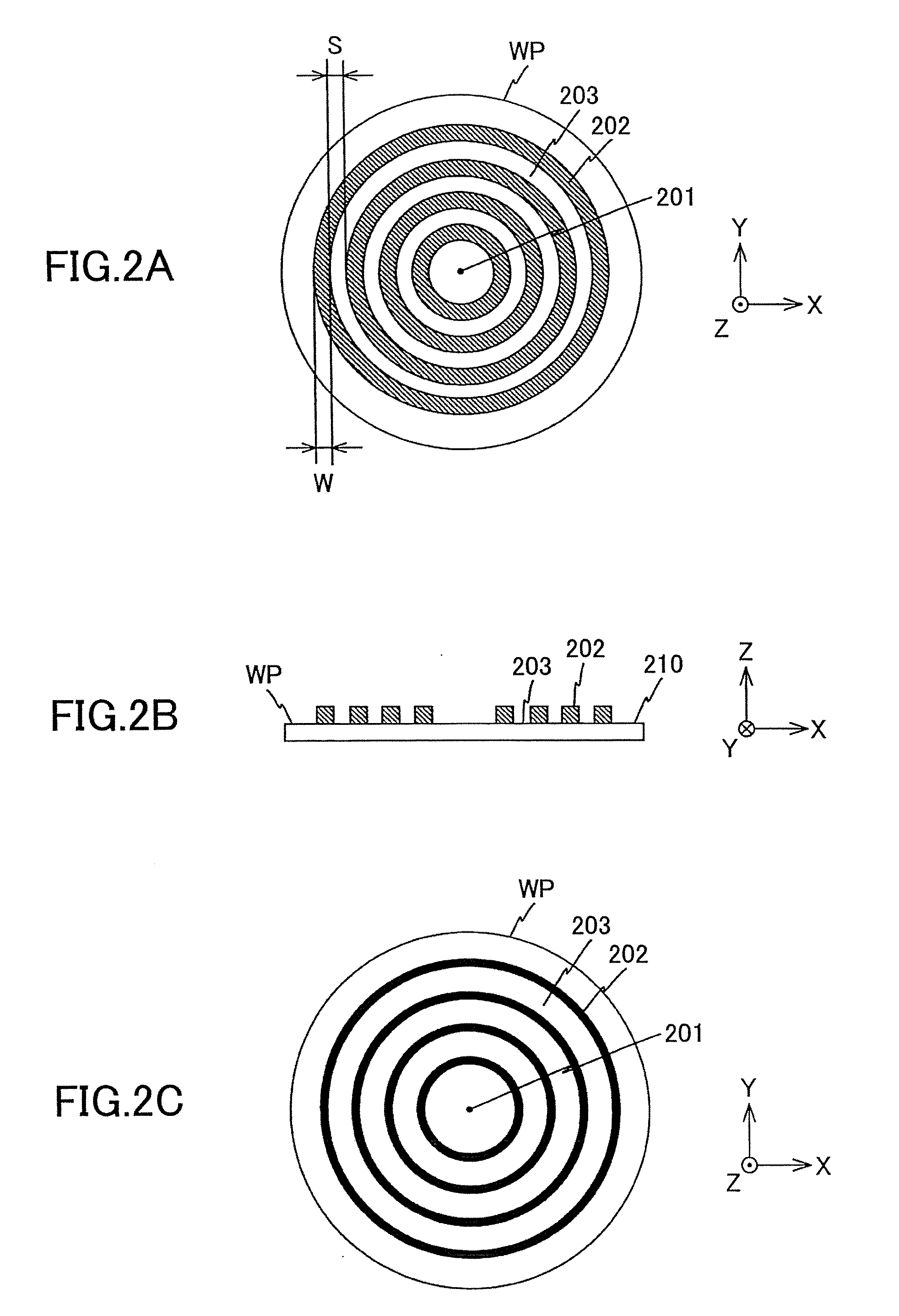Aberration evaluation pattern, aberration evaluation method, aberration correction method, electron beam drawing apparatus, electron microscope, master, stamper, recording medium, and structure
- Summary
- Abstract
- Description
- Claims
- Application Information
AI Technical Summary
Benefits of technology
Problems solved by technology
Method used
Image
Examples
first embodiment
[0106]In the following, a first embodiment of the present invention is described with reference to FIGS. 1 through 9. FIG. 1 is a schematic drawing illustrating a drawing apparatus 100 according to the first embodiment of the present invention. The drawing apparatus 100 is a drawing apparatus capable of drawing a fine pattern on a drawing surface of a sample by irradiating an electron beam onto the sample on which the drawing surface is formed by coating a resist material, for example, under a condition of 10−4 Pa in degree of vacuum.
[0107]As shown in FIG. 1, the drawing apparatus 100 includes a rotary table unit 30 on which a sample is mounted, an irradiation apparatus 10 for irradiating an electron beam onto the sample, a vacuum chamber 50 for housing the rotary table unit 30, and a main control unit 70 for integrally controlling those elements of the drawing apparatus 100.
[0108]The vacuum chamber 50 is a hollow member having a rectangular shape with the bottom (−Z direction) open...
second embodiment
[0141]Next, a second embodiment of the present invention is described with reference to FIGS. 10 through 15. It should be noted that the same reference numerals are used for the same or equivalent elements as those in the first embodiment, and the descriptions of the elements are omitted or abbreviated.
[0142]FIG. 10 is a flowchart showing a series of processes carried out by the main control device 70 in the irradiation apparatus 10 when an astigmatism correction method according to the second embodiment of the present invention is performed. In the following, a method of correcting the astigmatism of the irradiation system in the irradiation apparatus 10 based on the descriptions in FIG. 10 is described. The assumption is that the reference sample “WP” shown in FIG. 11 is mounted on the rotary table 31 of the drawing apparatus 100, an x,y coordinate system with its origin at the center of the reference sample “WP” and an x′,y′ coordinate system rotated 45 degrees with respect to th...
third embodiment
[0161]Next, a third embodiment of the present invention is described with reference to FIGS. 17A through 18B. It should be noted that the same reference numerals are used for the same or equivalent elements as those in the first and second embodiments, and the descriptions of the elements are omitted or abbreviated.
[0162]An aberration correction method according to the third embodiment of the present invention is different from that of the above-mentioned second embodiment in the process of focus adjustment in step 201 in FIG. 10. In the following, the focus adjustment method is described.
[0163]Here, since the positional relationship between the objective lens 19 and the rotary table 31 is constant, a current value supplied from the main control device 70 to the objective lens (herein after referred to as DAC value) when the focusing position of an electron beam that receives refractive power by the objective lens 19 is focused in the vicinity of the upper surface of the rotary tabl...
PUM
 Login to View More
Login to View More Abstract
Description
Claims
Application Information
 Login to View More
Login to View More - R&D
- Intellectual Property
- Life Sciences
- Materials
- Tech Scout
- Unparalleled Data Quality
- Higher Quality Content
- 60% Fewer Hallucinations
Browse by: Latest US Patents, China's latest patents, Technical Efficacy Thesaurus, Application Domain, Technology Topic, Popular Technical Reports.
© 2025 PatSnap. All rights reserved.Legal|Privacy policy|Modern Slavery Act Transparency Statement|Sitemap|About US| Contact US: help@patsnap.com



